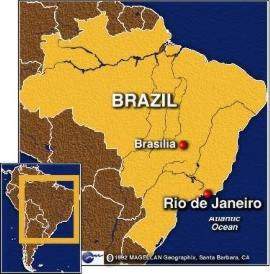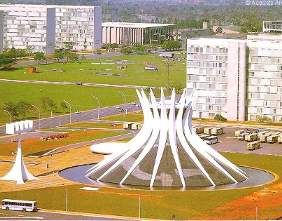Brasília

| Facts |
||
| Area | 5.801 Km2 |
|
| Population |
2.051.146 (1996) |
|
| Area Code | 061 | |
| Time zone | GMT -3 hours | |
| Voltage | 220 V | |
| Average Temperatures |
||||
| Months | January | April | |
September |
| ºC | ºC | ºC | ||
| Highest | 28,8 | 28,8 | 27,8 | 32,4 |
| Average | 21 | 20,7 | 18,2 | 21,4 |
| Lowest | 16 | 11,2 | 9,8 | 10 |


